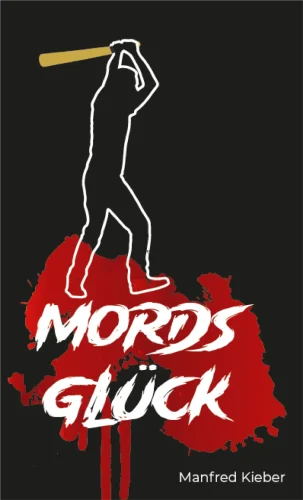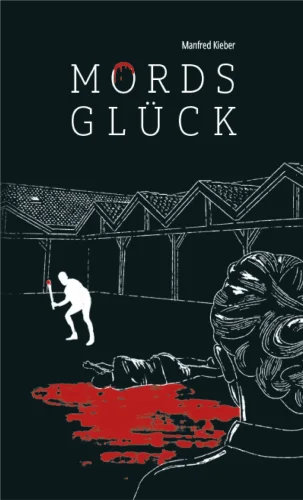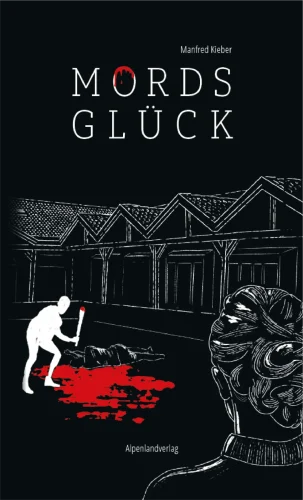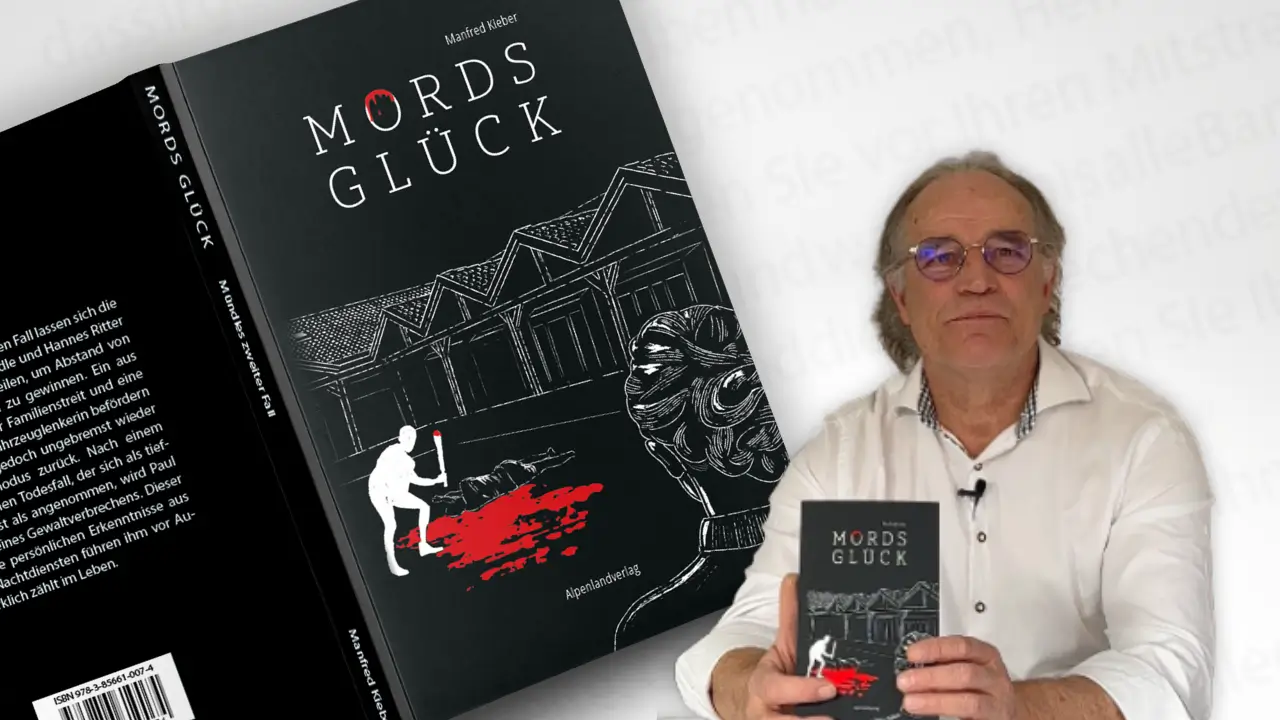On the occasion of his latest crime novel Mords Glück, we visited Liechtenstein author Manfred Kieber at his home and asked him tons of questions about his daily life as a writer, the ingredients for a thrilling crime story and (of course) the perfect murder.
Of course, we couldn’t resist talking about the book cover of Mords Glück, and its production – after all, it was in-house by us at Gutenberg AG.
A Day in the Life of a Writer
Manfred, what does a typical workday look like for you?
I wake up early and start my day in the stables with my horses. After that, I focus on music: one hour of piano, one hour of guitar. Around 9 AM, I sit down at my desk and write—at least six days a week. It’s a pretty structured routine, but it helps me stay disciplined.
How long does it take you to write a novel?
My first and third novels each took a year, while the second one was a bit quicker. On average, you should allow yourself a year—but depending on the length and research, it can take longer. If you need to visit archives or travel to locations, it can stretch to a year and a half.
What are the different phases of writing?
First comes the tough phase: planning. The story needs to be structured, setting up the framework with a beginning, middle, and end—this takes about two to four hours. Then comes the creative phase, where the story is brought to life. There are also frustrating times when nothing seems to move forward. During those moments, I find it helpful to rewrite my previous texts or record ideas on the go with a voice recorder.
What do you do when you have writer’s block?
I sit down at my desk anyway—just waiting and hoping for inspiration doesn’t work. If I’m really stuck, I either read my own texts or another book. Sometimes that sparks an idea and I immediately write it down. And when I’m in a flow, I can write for 20 hours straight—that’s something you must take advantage of!
What Makes a Good Crime Story
What does a crime novel need to stay thrilling?
A crime story needs that special something—not just an everyday plot, but one that’s a bit out of the ordinary. Personal fates are important because they make the story feel real and relatable. And most importantly: something exciting should happen every 20 to 30 pages to keep the tension high and keep the reader hooked. The culprit should only be revealed in the last three to four pages—otherwise, the story runs out of steam!
You used to be a police officer. Has that helped you with writing?
Absolutely! I know how an investigation works, how to conduct the hearing and how the case is closed. That makes my stories feel authentic. But after writing three crime novels, I want to try something new—maybe a hero’s journey or a life novel spanning from youth to old age. Let’s see where the journey takes me!
And now the most important question: How do you commit the perfect murder?
(Manfred chuckles). Every murder is perfect—if it never gets solved.
The Book Cover: From Concept to Final Design
 Design: Chiara Vonbun Design: Chiara Vonbun |
 Design: Vanessa Kaufmann Design: Vanessa Kaufmann |
 Design: Vanessa Kaufmann Design: Vanessa Kaufmann |
|---|
How did the design process unfold?
I reached out to Gutenberg AG and asked if they could design the cover. We then sat down together, I told them the story of the novel and Chiara and Vanessa developed several design proposals. I took my time reviewing the drafts, discussed them with friends and family members and gave it a lot of thought. In the end, I chose the third cover—and I’m very happy with the result!
How the result got achieved: The first draft turned out to be too brutal and didn’t quite fit the story, as the murder in the book is more of a “small” incident. The second design was heading in the right direction, but the murderer’s posture wasn’t quite right. It was crucial that the final cover gave the impression that the murderer was caught in the act.
The final cover features an adjusted position for the murderer. The woman in the lower right corner was slightly reduced in size so she wouldn’t draw too much attention. The background was also refined to better capture the atmosphere and crime scene of the story.
What Would You Like to Share with the Readers?
Anyone who enjoys writing should just sit down and get started. Of course, you can learn the craft to have a good system in place. But the joy of putting your own fantasies and thoughts onto paper is incredible. And when you finally hold your finished book in your hands, a book you’ve almost created entirely on your own, it’s truly a special feeling. Whether it sells or not is another thing (chuckles), but the sense of achievement remains.
Your Book at Gutenberg AG – Professionally Printed and Sustainably Produced
Would you like to have your book printed with us or design a unique cover? Gutenberg AG combines years of experience in creative design and printing. Contact us for a free consultation – we’ll help you present your work perfectly!
Follow us on:
Contact us:
il.grebnetugobfsctd-3ee97e@eciffo
+423 239 50 50

